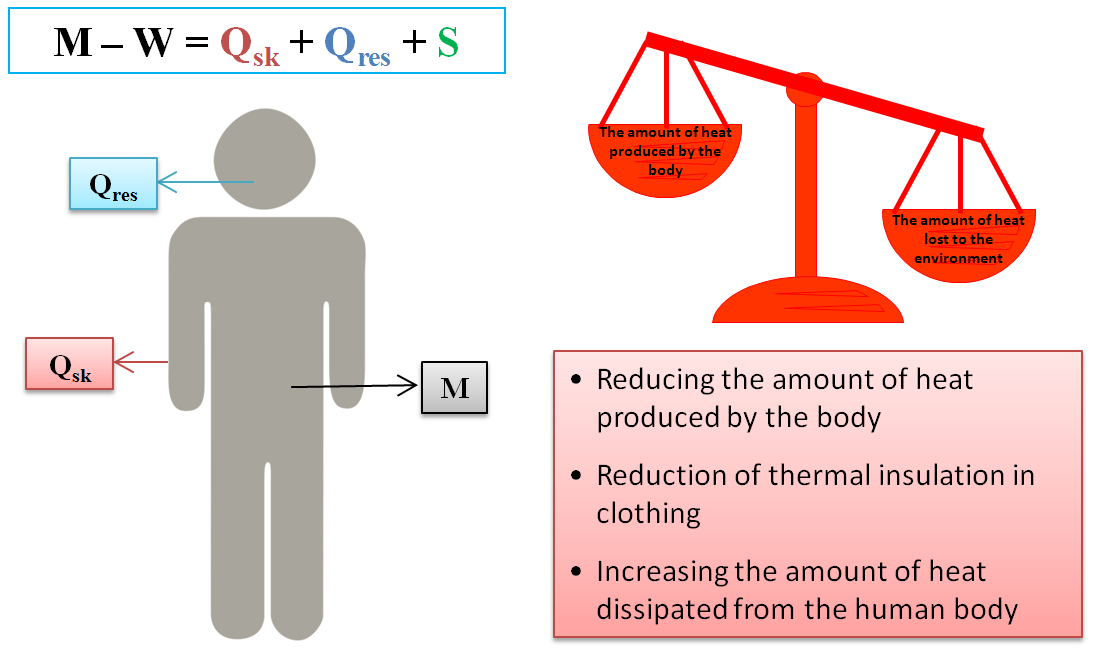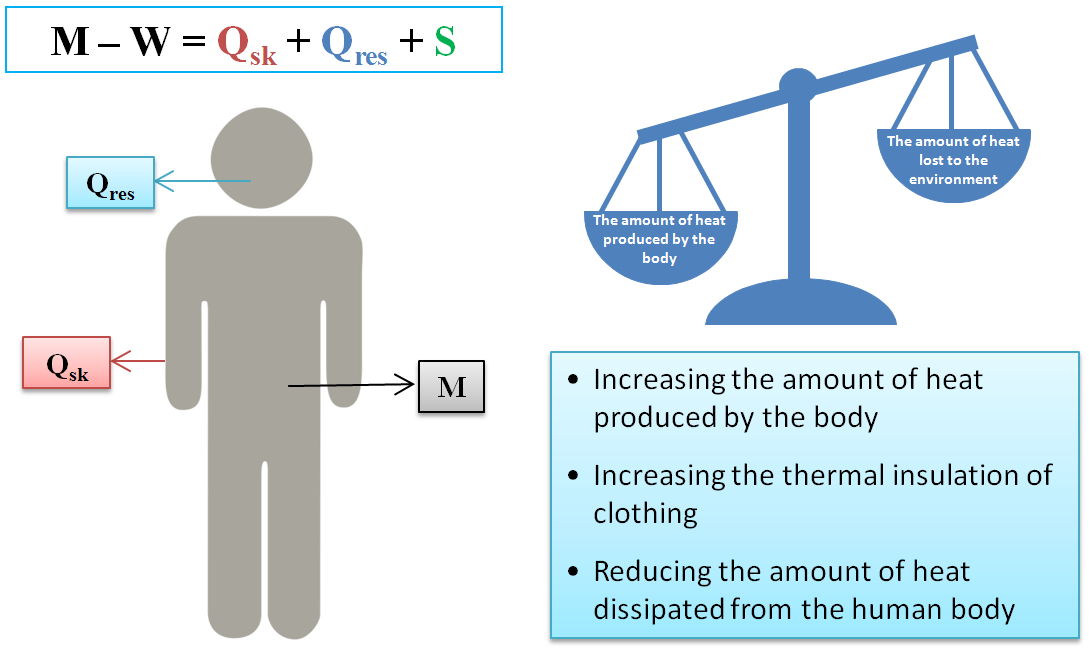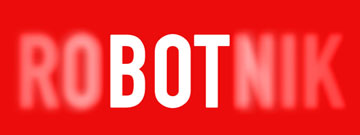Misją Instytutu jest dzialalność naukowo-badawcza prowadząca do nowych rozwiązań technicznych i organizacyjnych użytecznych w kształtowaniu warunków pracy zgodnych z zasadami bezpieczeństwa pracy i ergonomii oraz ustalanie podstaw naukowych do właściwego ukierunkowywania polityki społeczno-ekonomicznej państwa w tym zakresie.

GENERAL RULES FOR REDUCING THE THERMAL STRAIN OF EMPLOYEES IN A HOT MICROCLIMATE
In order to reduce the heat strain in a hot environment, the same should be done to balance the heat balance (aim for S = 0). This condition can be achieved by, among others reducing the amount of heat produced by the body (e.g. reducing the load of work), reducing the thermal insulation of clothing (improving heat exchange with the environment) and increasing the amount of heat received from the human body by the external environment (e.g. increasing the air flow).
Fig. 1 General rules for reducing thermal strain in a hot microclimate
In order to mitigate the influence of the hot environment on the human body, one should also remember about proper rehydration of the organism, supplementing water and electrolyte deficiencies caused by intensive sweating. Before starting work in a hot environment, employees should undergo initial health checks and be acclimated in conditions corresponding to the conditions prevailing at the workplace. It is also recommended to replace work clothes frequently and use light, lightweight clothing.
In order to ensure the safety of employees' health, it is recommended that work in a hot environment be carried out in teams of min. 2 personal (including to ensure mutual observation).
It would also be advisable to use such production processes, machines and devices that do not emit or emit small amounts of heat. It is also recommended to isolate heat source devices - place them in separate rooms or locate them outside the building
GENERAL RULES FOR REDUCING THE THERMAL STRAIN OF EMPLOYEES IN A COLD MICROCLIMATE
In order to reduce the heat load in a cold environment, one should strive to balance the heat balance (aim at S = 0). This condition can be achieved by, among others increasing the amount of heat produced by the body, increasing the thermal insulation of clothing and reducing the amount of heat received from the human body by the external environment (e.g. reducing the air flow).
Fig. 2 General rules for reducing thermal strain in a cold microclimate
To alleviate the influence of the hot environment on the human body, employees should be allowed access to warming drinks (with the exception of liquids with the addition of caffeine) and hot and high-calorie dishes. It is recommended to change sweat clothes frequently due to the lowering of its thermal insulation parameters. The clothing used for work in the cold microclimate should have thermal insulation equal to the IREQ value specified for the actual working conditions, i.e. taking into account the thermal conditions of the environment and the intensity of the activities performed (energy expenditure). At an air temperature lower than -1oC, workers should use protective gloves that prevent frostbite, but at the same time ensure adequate efficiency. In the case of outdoor work, employees must be equipped with goggles to protect against snow or hail.




